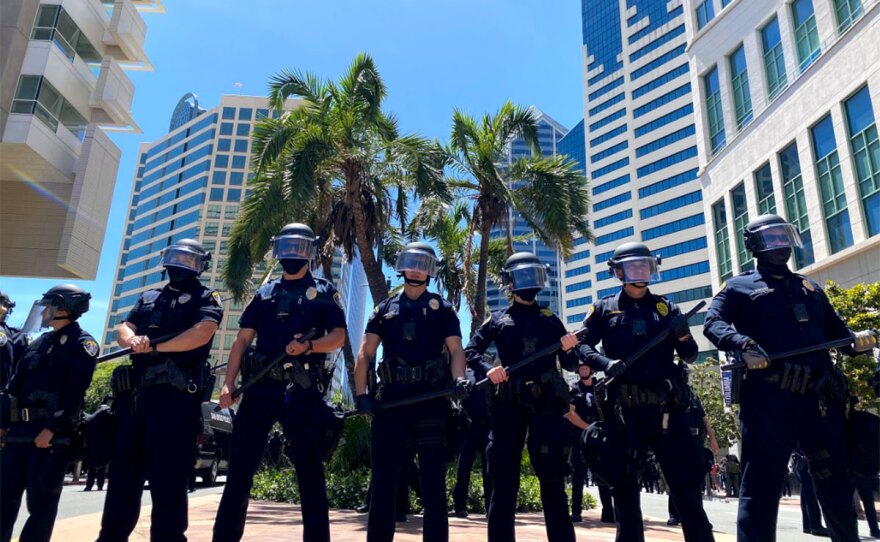Demonstrators in San Diego and across the nation are calling for police reform in the wake of the police killing of George Floyd.
The San Diego Police Department took action in recent weeks. It banned the controversial carotid restraint neck hold and more recently it introduced a standalone de-escalation policy as well as a new requirement that police officers intervene if they witness a fellow officer using excessive force. Also, San Diego voters will weigh in on a ballot measure this fall to create an independent panel that would investigate officer misconduct.
But can these policies create the change community members are looking for? And, where does the movement to change policing go from here?
We'll explore those questions in a special broadcast of KPBS and the National Conflict Resolution Center's community conversation on the future of policing in San Diego. Panelists San Diego city Council member Monica Montgomery, Khalid Alexander, founder and president of Pillars of the Community, a social justice organization, and police Detective Jack Schaeffer, president of the San Diego Police Officers Association, the union that represents officers within the San Diego Police Department joined the conversation led by KPBS investigative reporter Claire Trageser.
KPBS invited the San Diego Police Department to be a part of this conversation but a department spokesman declined our invitation.








